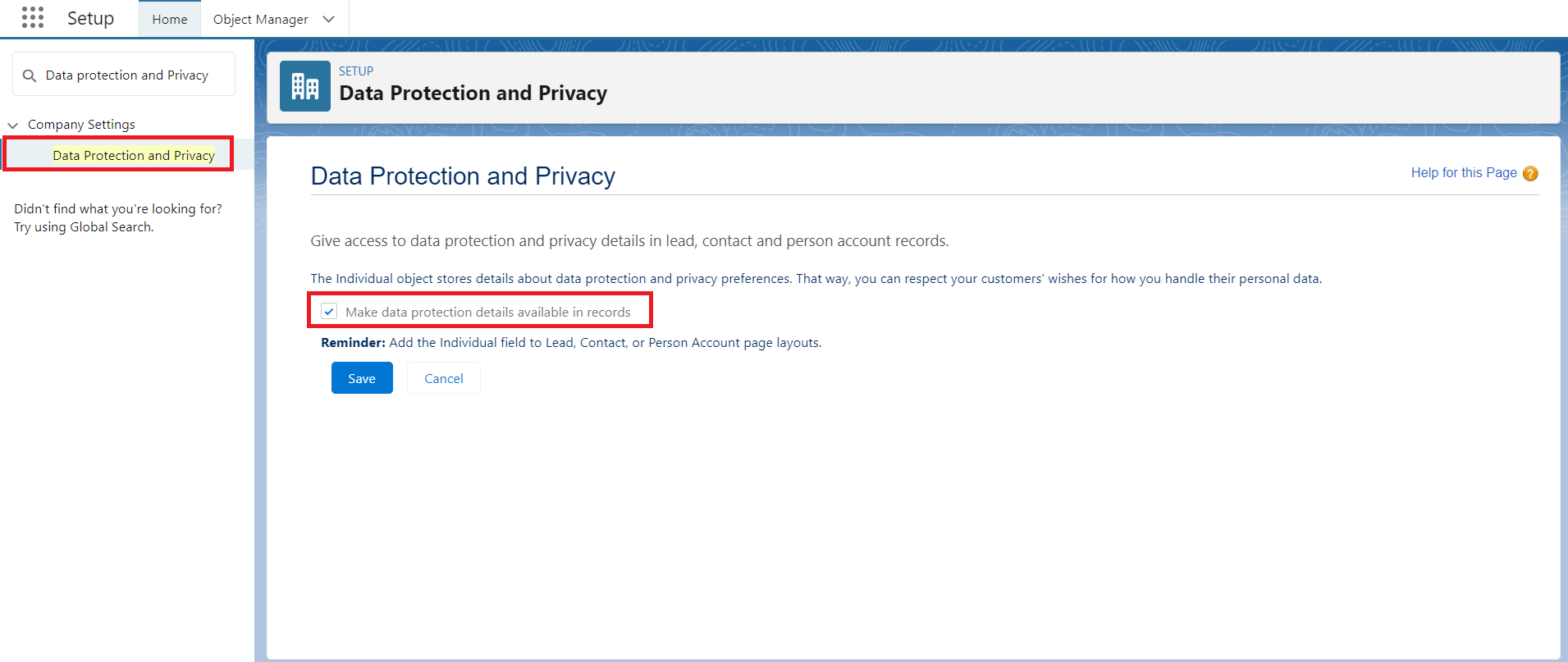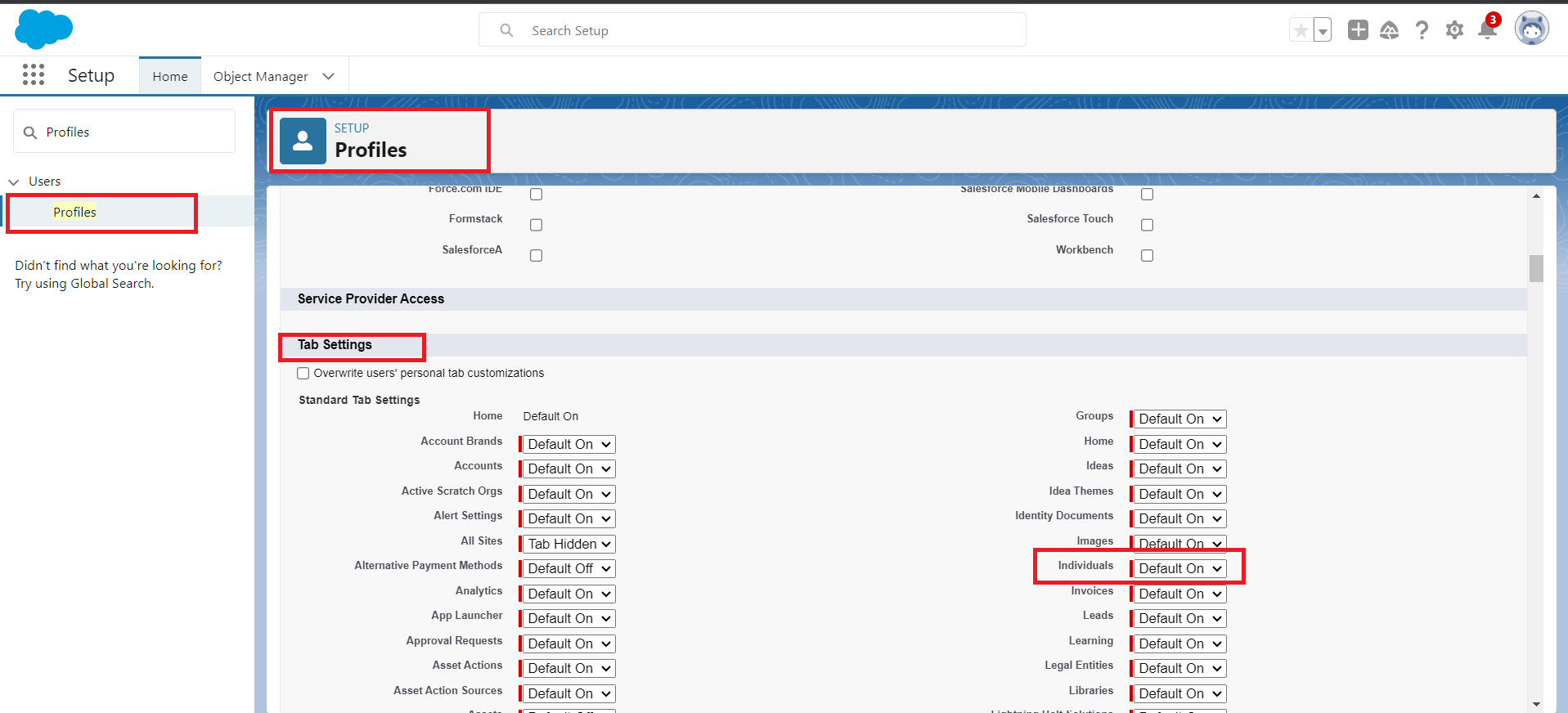Introduction:
In the ever-evolving landscape of data privacy and protection, the General Data Protection Regulation (GDPR) has emerged as a crucial framework that governs how organizations handle personal data. Businesses across the globe have had to make significant changes to their operations to align with GDPR requirements. One notable player in this compliance journey is Salesforce, a leading customer relationship management (CRM) platform that has leveraged the Individual object to implement GDPR regulations effectively. In this blog, we'll explore how Salesforce employs the Individual object for GDPR compliance, as well as the significance of the "Make data protection details available in records" setting.
Understanding the Individual Object:
Salesforce introduced the Individual object as part of its platform to help organizations manage and store personal data in compliance with GDPR regulations. The Individual object acts as a centralized repository to manage data subjects' personal information and consent preferences. By consolidating customer data into this single entity, Salesforce enables organizations to gain better control over data privacy while providing a clear view of how data subjects' information is being handled.
Salesforce's use of the Individual object can be summarized through three main functionalities:
In this example, we are testing the logic of an Apex trigger on the Account object. The test class sets up a test account, performs an action that triggers the trigger (updating the account's description), and then asserts the expected outcome (checking if the description was updated successfully).
Make sure to adjust the test class code based on your specific trigger and object requirements. Include additional test methods to cover different scenarios and test cases.
1. Data Collection and Consent Management: With the Individual object, organizations can collect, store, and manage consent records for various data processing activities. This includes obtaining explicit consent for data processing and managing the scope of that consent over time. Data subjects' consent preferences are linked directly to their records, providing transparency and accountability.
2. Right to Access and Erasure: GDPR grants data subjects the right to access their personal data and request its deletion (the "right to be forgotten"). Salesforce leverages the Individual object to facilitate these rights. Organizations can quickly locate an individual's data, provide them with a comprehensive view of their stored information, and, if necessary, delete the data upon request.
3. Audit Trails and Accountability: The Individual object allows organizations to maintain an audit trail of consent-related activities. This ensures that compliance teams can track when and how consent was obtained, modified, or withdrawn. This accountability helps organizations demonstrate their commitment to data protection to regulatory authorities.
Make Data Protection Details Available in Records
One of the key features that Salesforce provides to enhance GDPR compliance is the Make data protection details available in records setting. This setting enables organizations to display data protection information directly within records associated with the Individual object. Here's how it works:
When enabled, this setting populates relevant data protection information and consent status in the individual's record. This information includes details about the data processing activities performed on the individual's data and the consent they've granted. It offers a transparent view of how their data is being used, fostering trust between the organization and the data subject.
This setting ensures that both the data subject and authorized personnel can easily access crucial privacy-related information without having to navigate through complex interfaces. By making this information readily available, Salesforce enhances transparency and strengthens its commitment to GDPR compliance.
Implementing GDPR with the Individual Object:
1. Enable Data Protection and Privacy
Setup>Quick Find Box>Data Protection and Privacy>Edit>Make data protection details available in records>Save

Figure 1:Enable Data Protection and Privacy.
2.Make the Individual object Visible.
Setup>Profiles>Select a Profile>Object Settings>Tab Settings>Individual>Default On>Save

Figure 2:Make Individual Objects Visible.
3.Using the Individual Object
Once enabled, Individual records need to be created and then related to Contact, Lead, Person Account, Community User, and/or any relevant custom object records

Figure 3:Create Individual Object records.
Let's assume you have a Lead and we have taken consent from the lead. That consent will be stored in the Individual object. When the Lead is converted into an Account and Contact, then the account and Contact will link to the Same Individual record, so that the consent information can continue to be tracked.
Conclusion:
Salesforce's utilization of the Individual object showcases its dedication to upholding data privacy and complying with GDPR regulations. By centralizing consent management, facilitating data access and erasure requests, and providing audit trails, Salesforce equips organizations with the tools they need to navigate the intricate landscape of GDPR. The "Make data protection details available in records" setting adds an extra layer of transparency, ensuring that individuals can confidently entrust their personal data to organizations using the Salesforce platform. As the digital world continues to prioritize data protection, Salesforce's implementation of the Individual object serves as a prime example of how technology can be harnessed to navigate and excel in the era of data privacy.
For any queries please reach out to support@astreait.com.